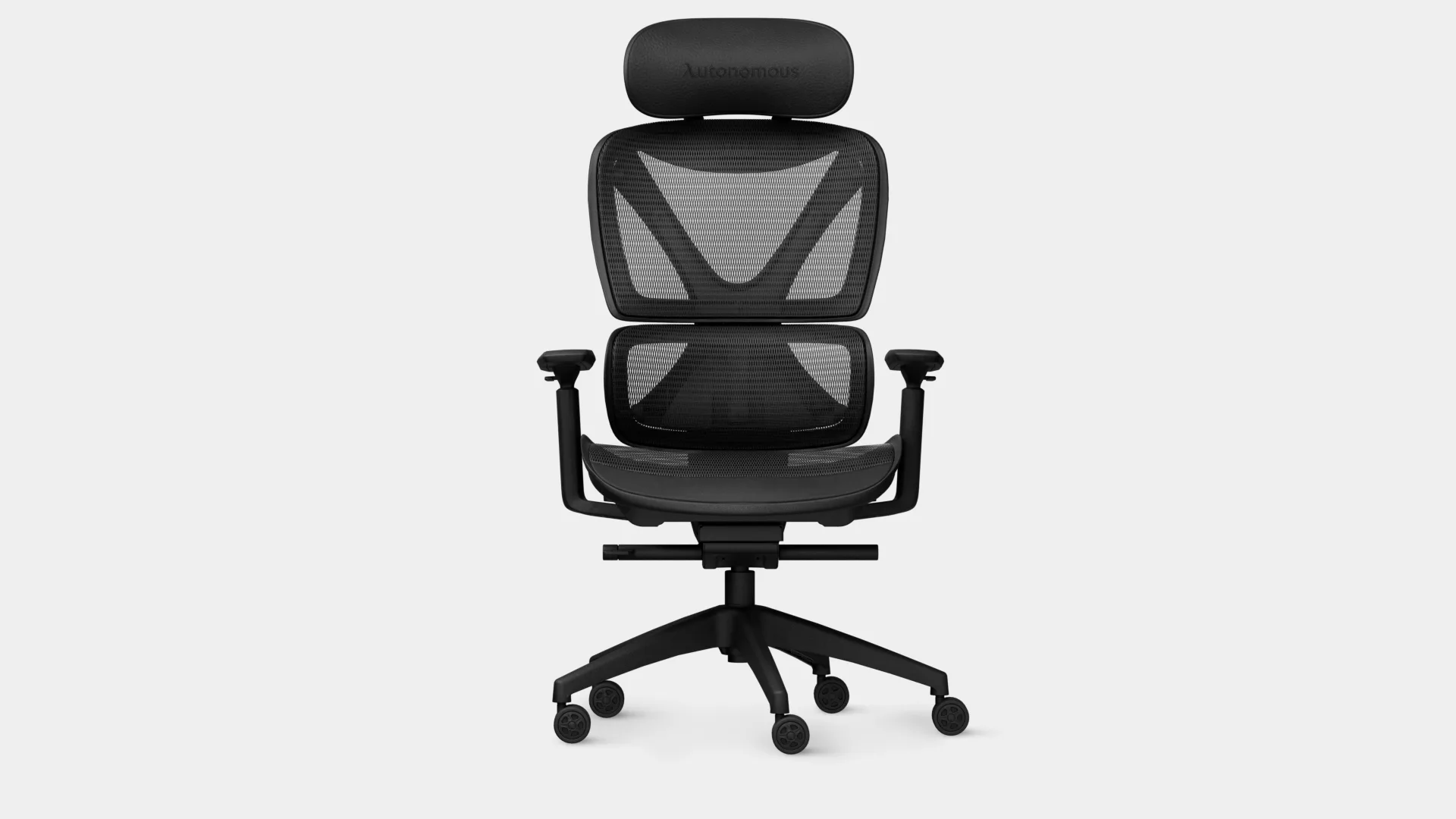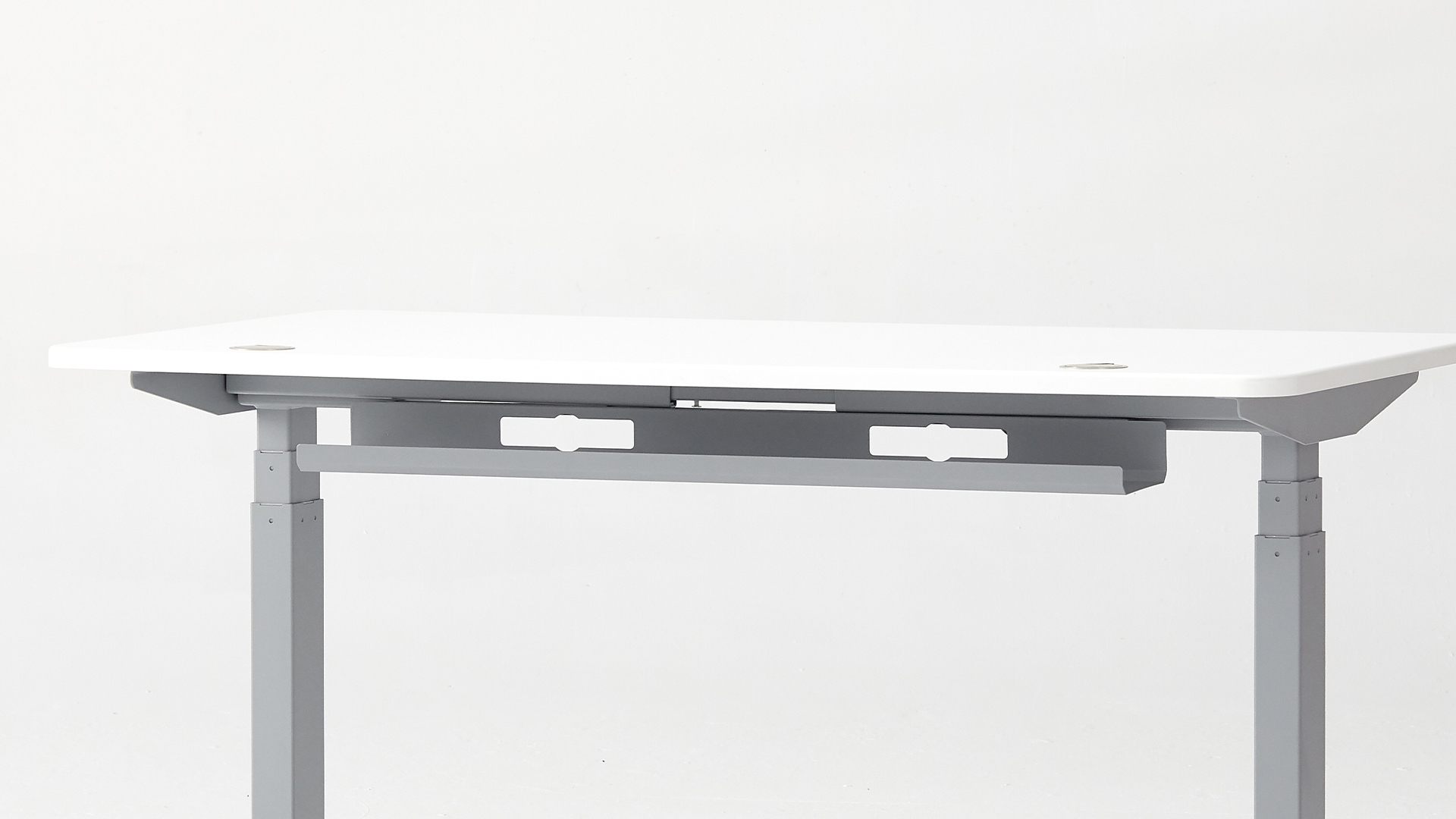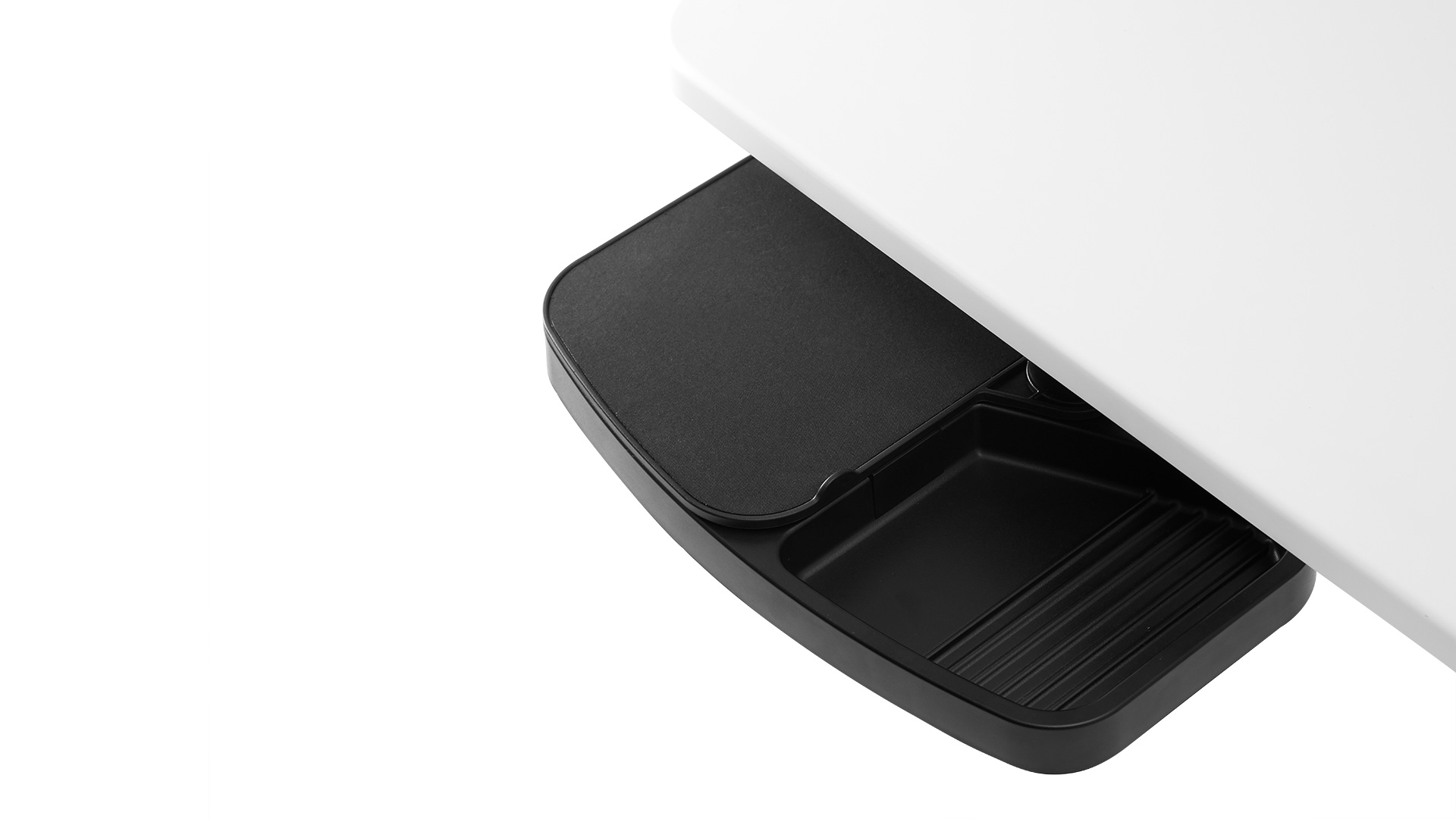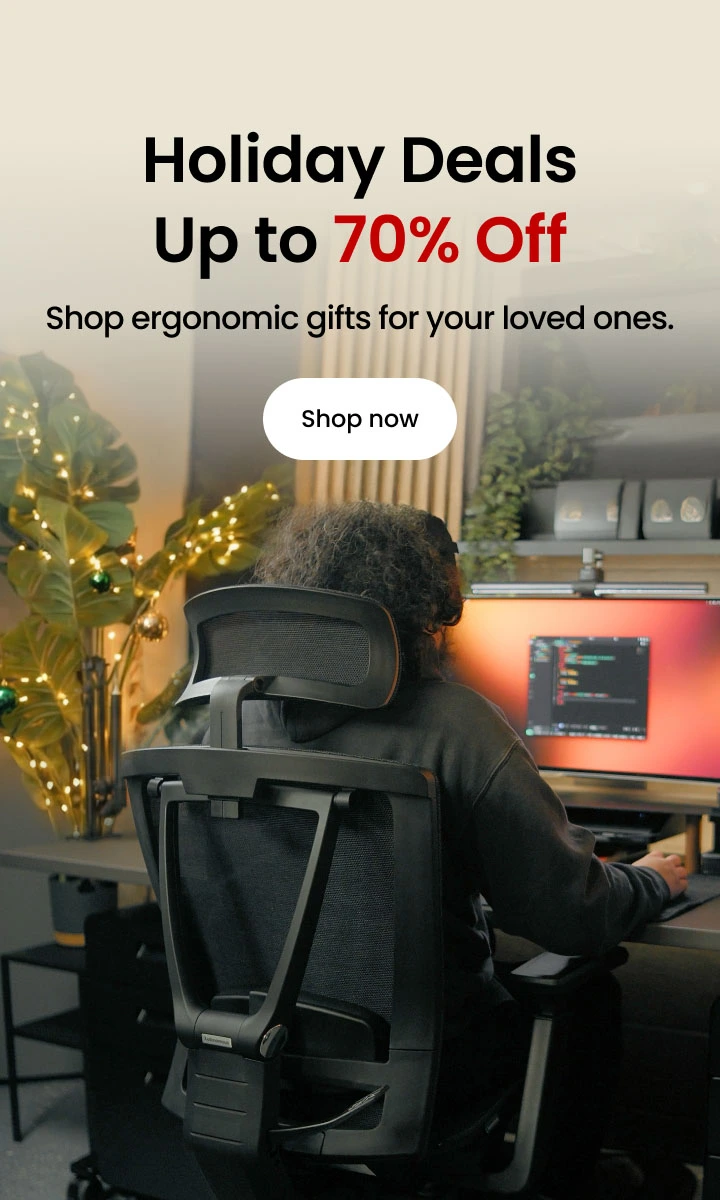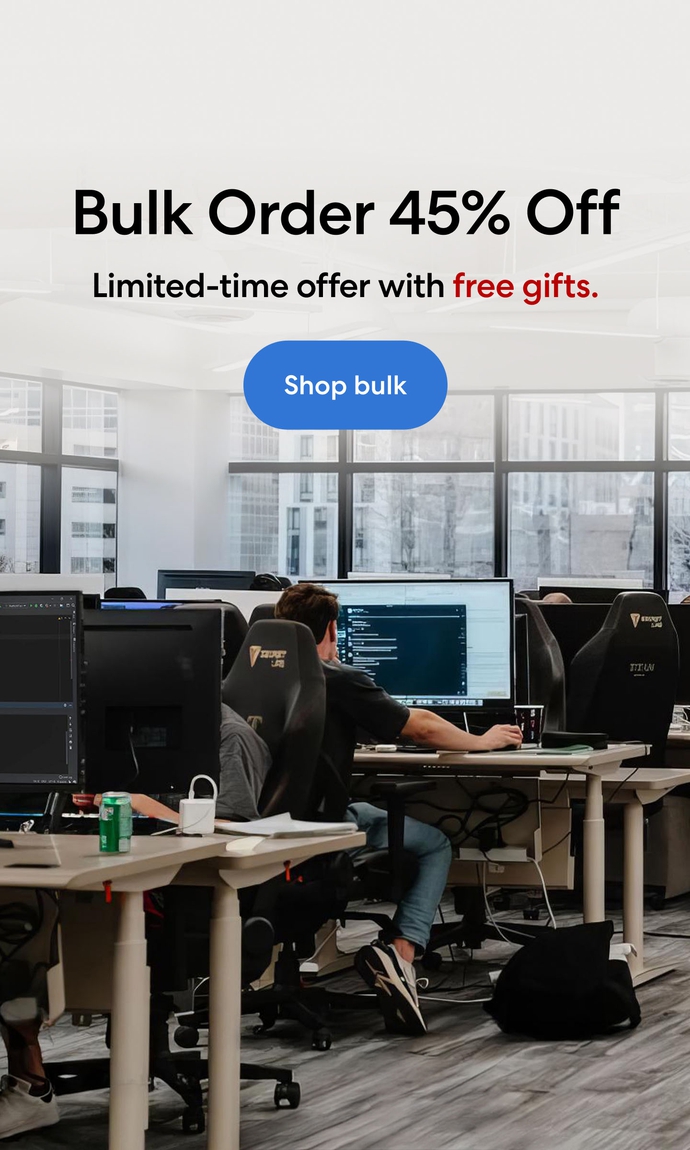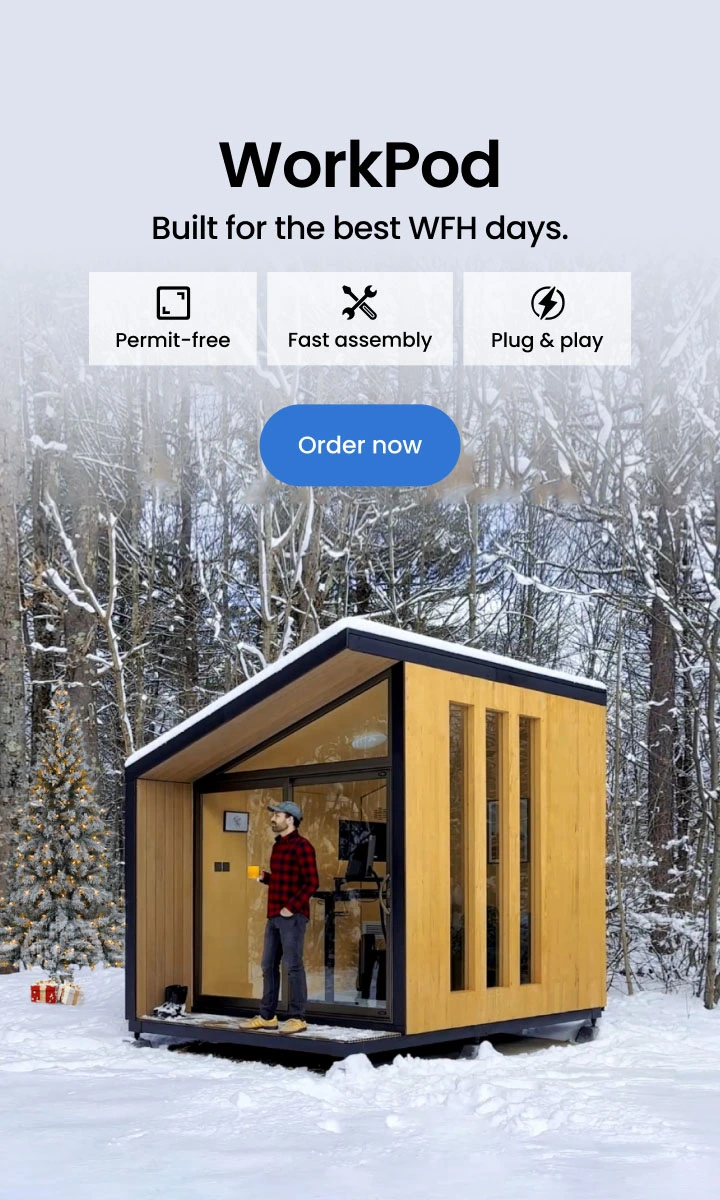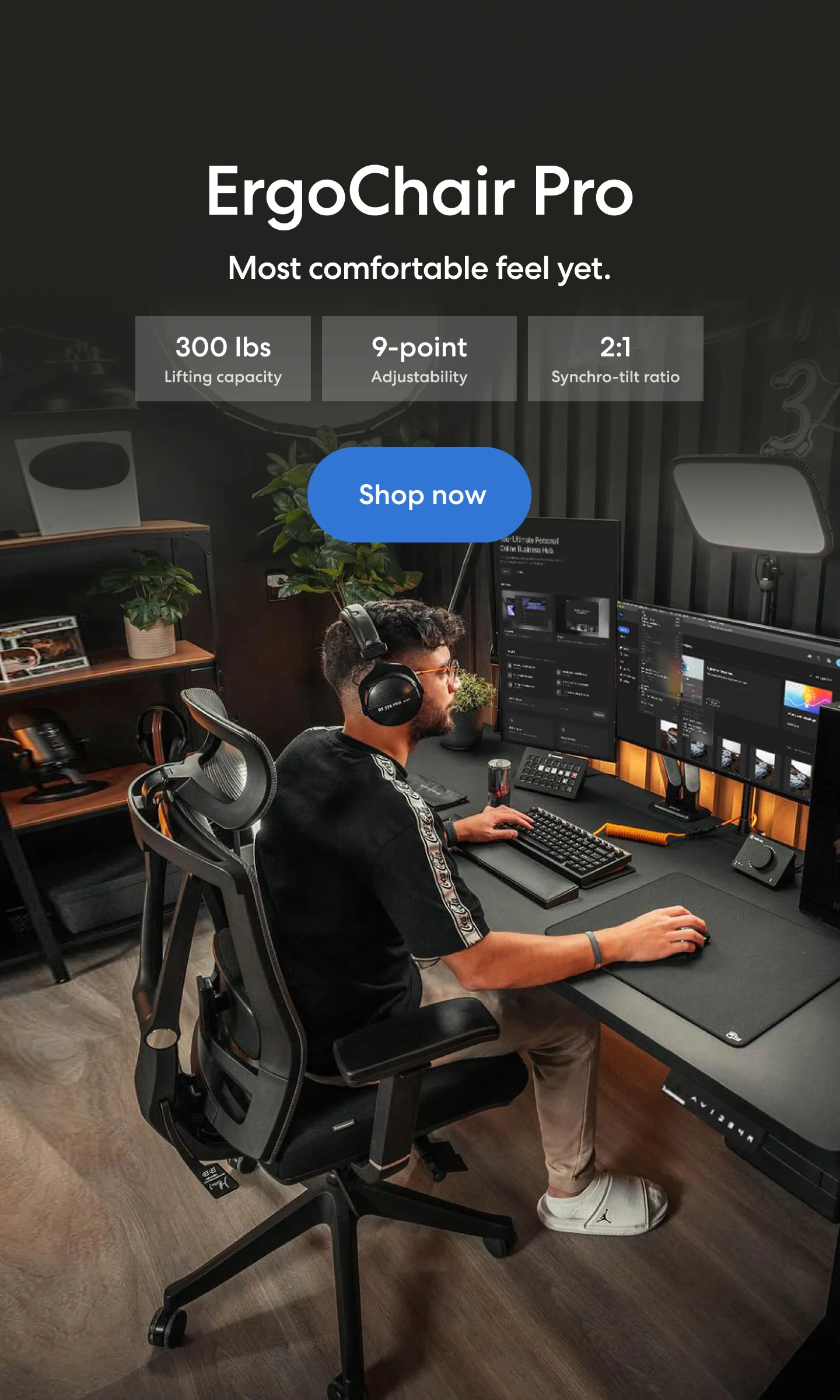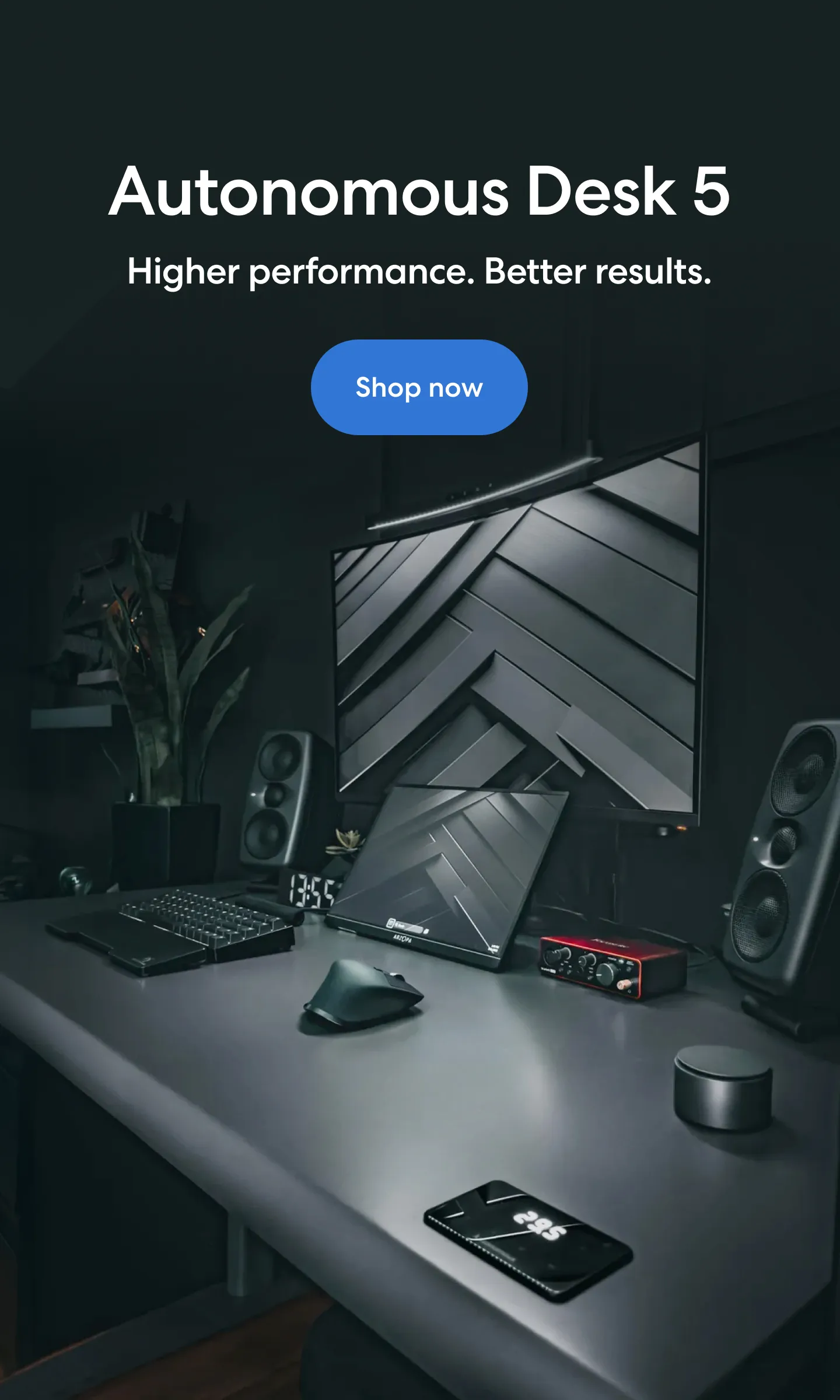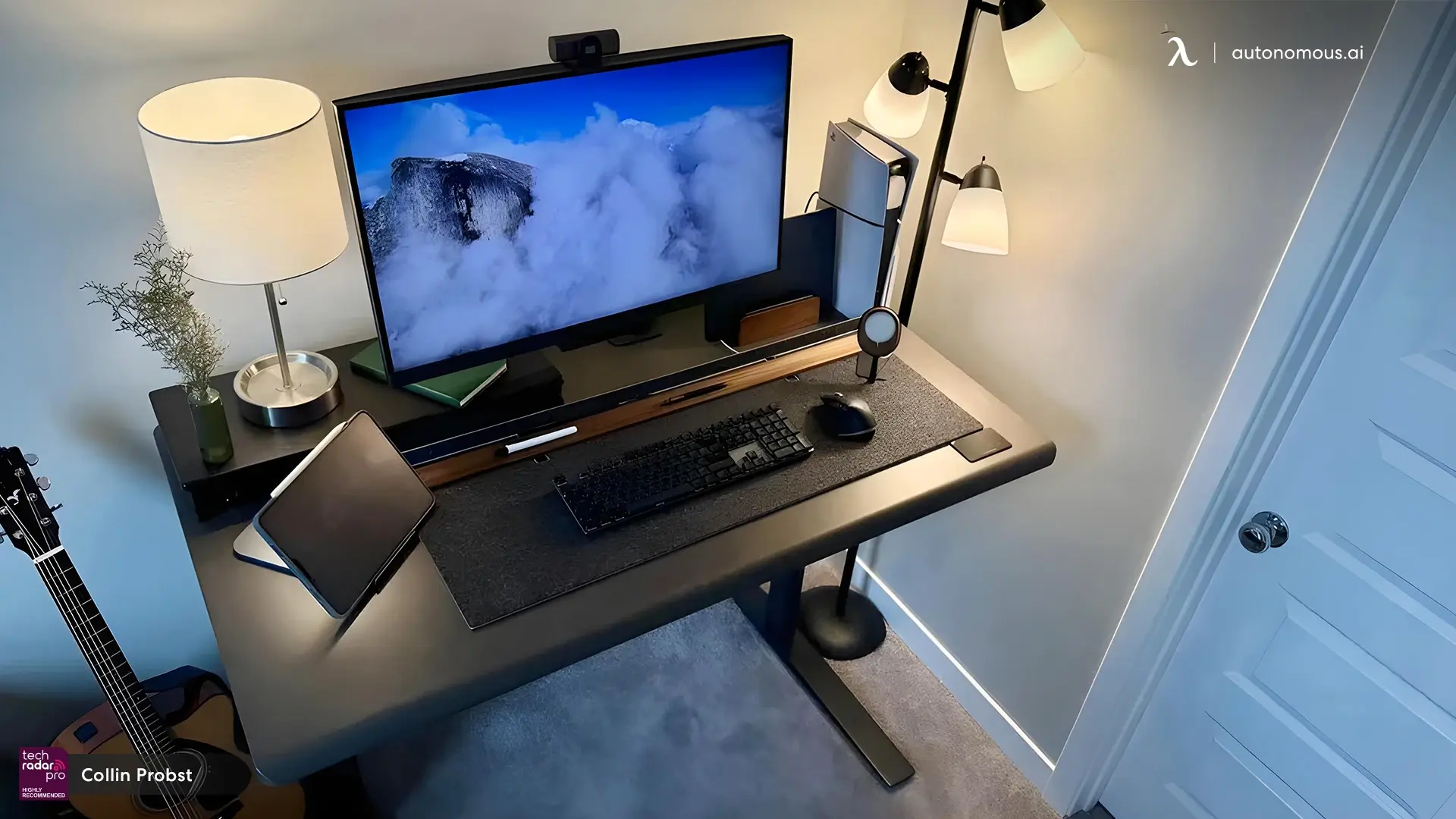
11 Custom Home Office Ideas That Transform Your Workspace
Table of Contents
Creating a custom home office design that actually works starts with knowing what to include—and what to skip. Whether you're setting up a compact corner or transforming an entire room, the right combination of layout, furniture, and thoughtful details can turn any space into a productivity powerhouse.
This guide explores how to shape your space intentionally, blending function and style to create a home office setup that truly works for you. From smart small-space solutions to mood-building strategies, each idea is designed to help you work better, feel more comfortable, and maintain focus throughout the day.
Why Remote Workers Need A Custom Home Office
A custom home office goes beyond looks — it’s about building a space that supports how you work every day. For remote workers, the right environment can shape focus, comfort, and long-term productivity. Here’s why it matters:
- A space that adapts to you:
A thoughtful custom home office design is built around your daily workflow, helping you stay organized, reduce distractions, and keep momentum through the day.
- Better posture and comfort:
A well-aligned workspace helps maintain a natural sitting position, reduces pressure on the back and neck, and keeps your body supported through prolonged sitting.
- Consistent daily rhythm:
Having a defined space makes it easier to build routines, signal the start and end of the workday, and maintain better discipline. This structure often leads to more productive work evironment.
- Stronger work-life boundaries:
A dedicated space helps remote workers mentally switch between professional tasks and personal time. This boundary reduces distractions, improves focus, and helps avoid burnout over time.
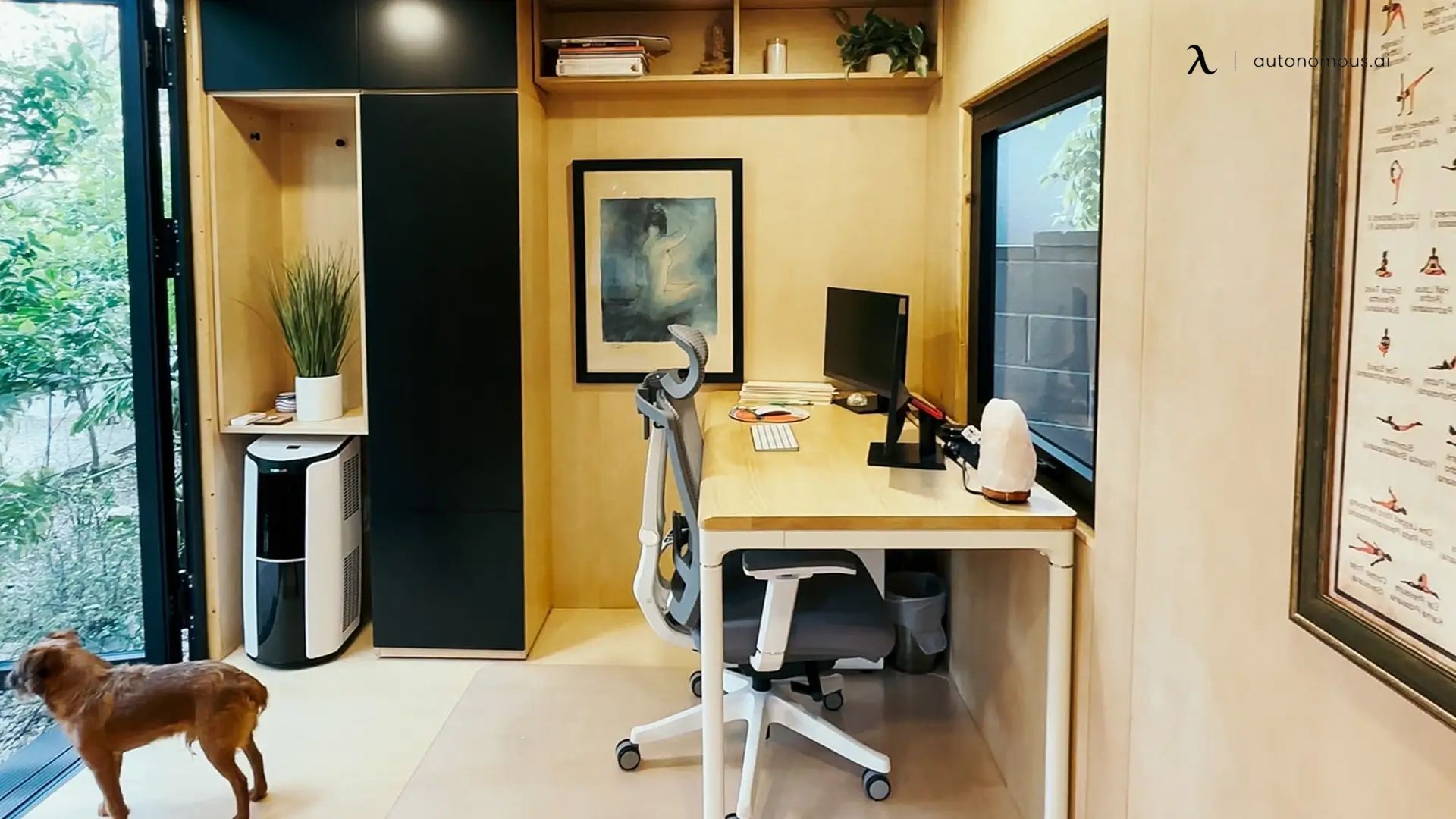
Custom Home Office Design Ideas For Remote Work
Designing a custom home office is about creating a space that fits your pace — not the other way around. Every surface, angle, and choice should support how you work, think, and recharge. Whether you’re in a small apartment or a dedicated room, the right approach can turn any space into a personal productivity hub.
Here are ten fresh, meaningful design ideas to inspire your own build:
1. Small & Smart Layouts
Space may be limited, but the design has no ceiling. Small home office layouts can make even the tiniest corner feel intentional, functional, and inspiring.
- Quiet Corner
Even the smallest spot can hold a big intention. A compact nook with a clean custom home office desk, layered task lighting, and vertical storage can feel surprisingly expansive. Every inch works harder — shelves float above the workspace, wires stay tucked away, and the entire zone looks curated, not improvised.
Choosing furniture with a smaller footprint, like a wall-mounted desk or narrow workbench, maximizes both movement and flow. This kind of setup turns overlooked corners into daily productivity rituals.
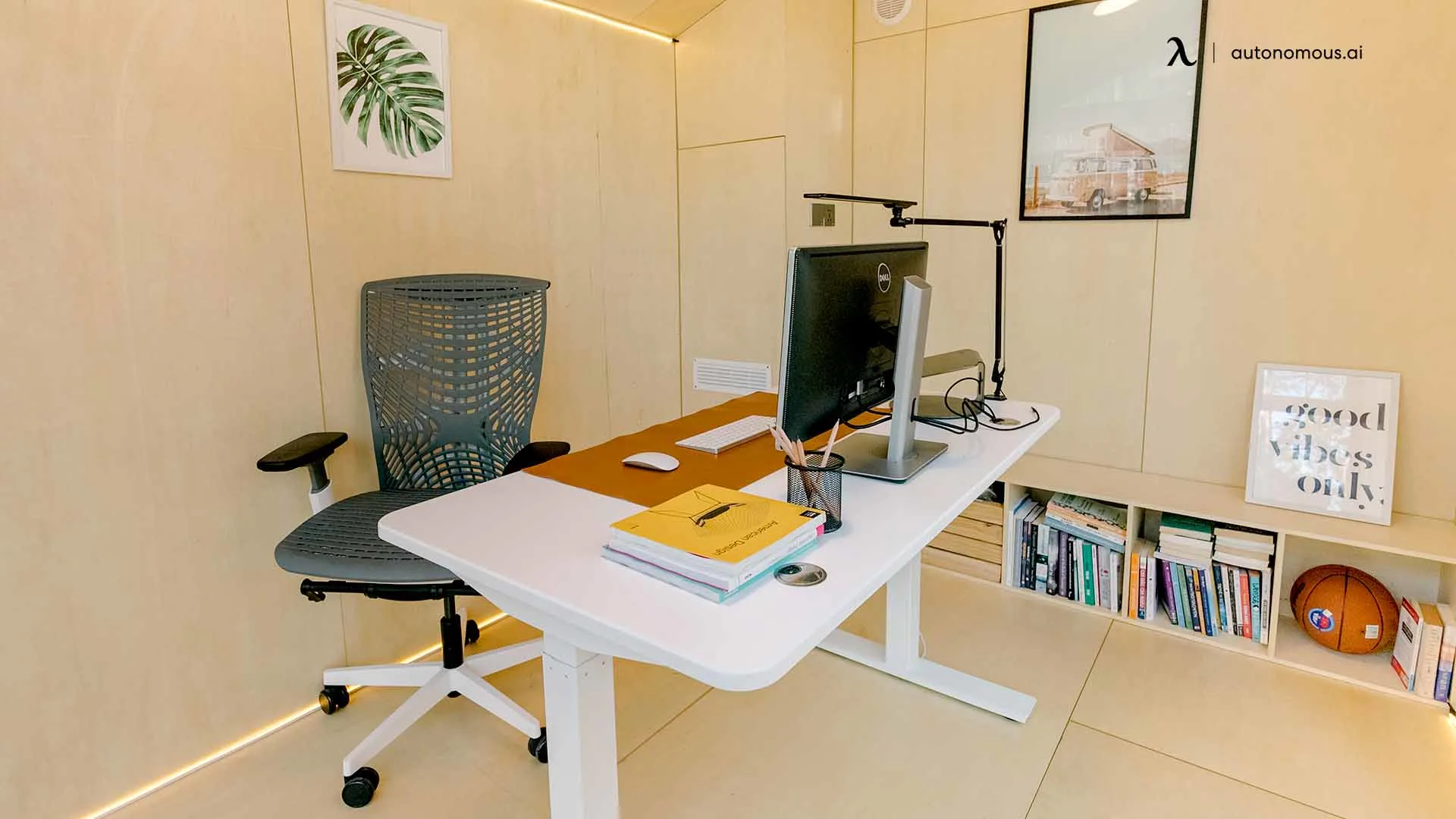
- Seamless Studio
Built-in designs bring structure without shouting for attention. Think hidden drawers, flush cabinetry, integrated power, and smooth surfaces that clear visual noise. Combined with supportive flooring and ergonomic office accessories, this setup supports better posture and sustained focus.
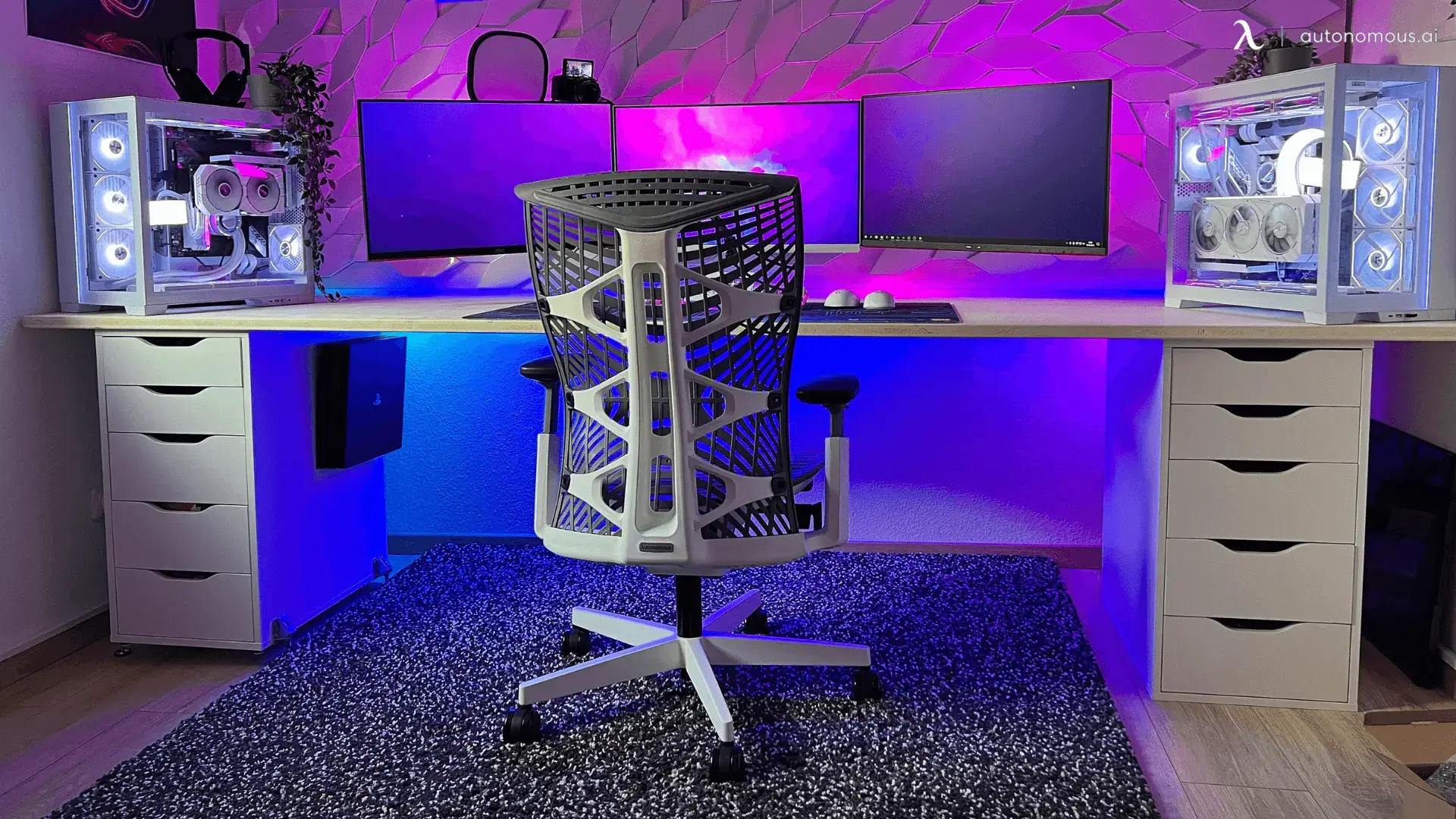
- Flex Station
For remote workers who live in shifting spaces, flexibility is power. A foldable computer desk, nesting tables, or modular shelving allow your setup to shift from focused work to open floor space in minutes. It can disappear when you need the room to breathe or transform into a full workstation when deep work calls.
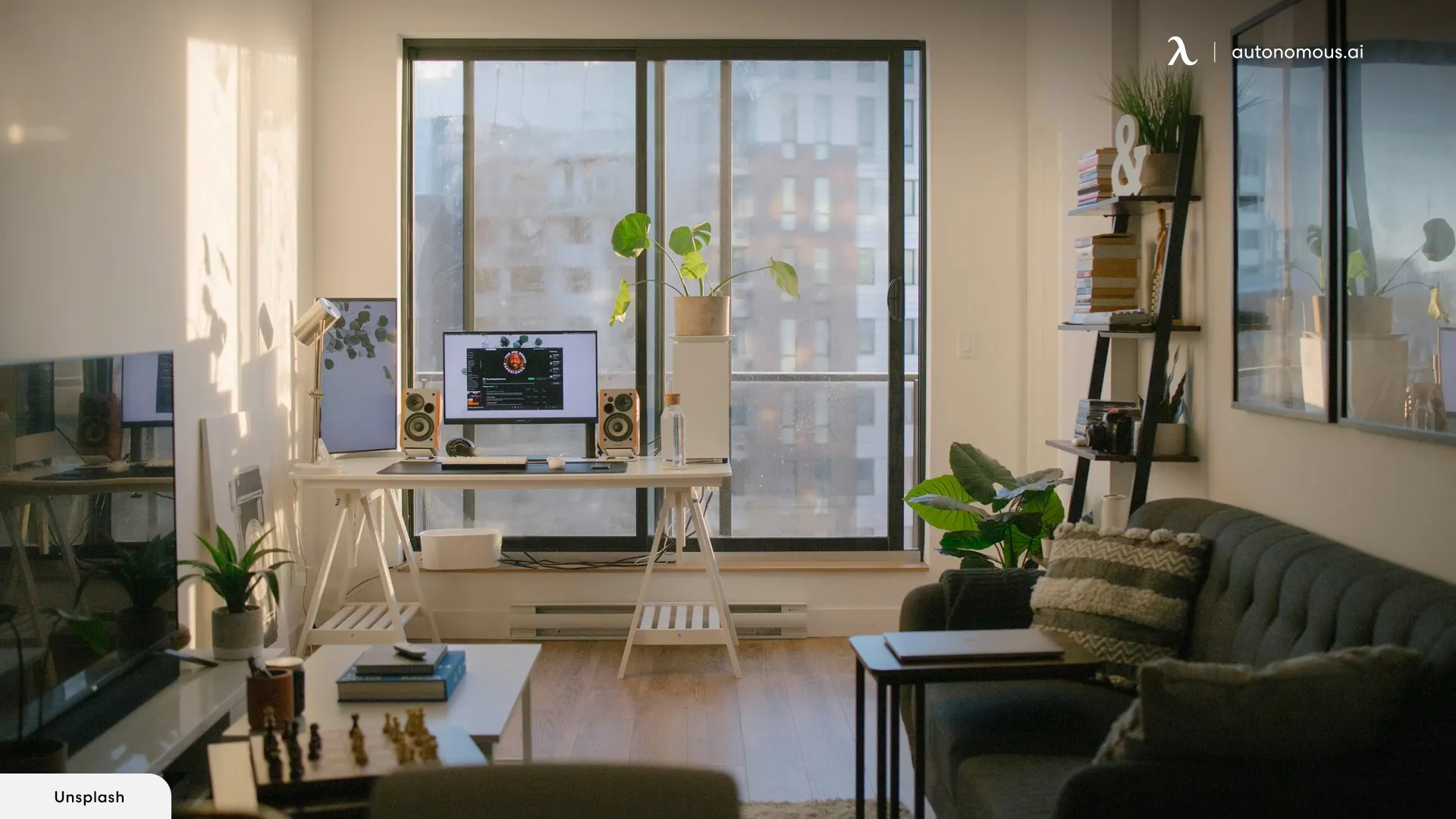
2. Mood & Energy Builders
Once the physical layout is set, the next layer is what makes a space come alive — how it feels. Mood isn’t decoration. It’s how the light lands, how sound moves, and how the room quietly shapes your focus without asking for it.
- The Light Lab
Light shapes mood more than we notice. A carefully layered mix of soft ambient lighting and focused task beams turns your custom home office into a space that draws you in, not out. The glow around your desk builds clarity in the morning and quiet focus at night — a subtle rhythm that keeps your energy steady.
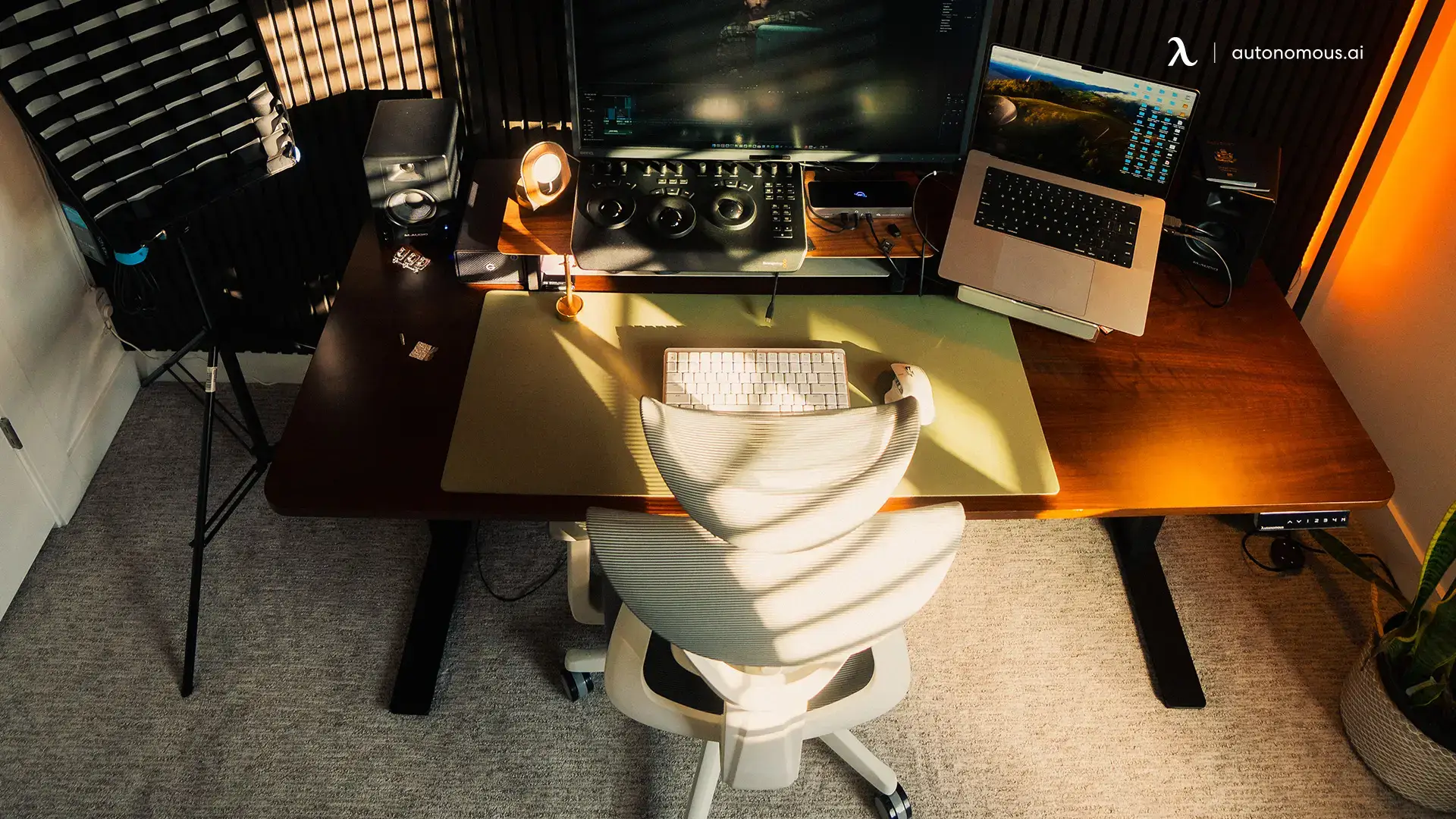
- The Sound Cocoon
Acoustics are often overlooked in remote work setups. Soft wall panels, thick rugs, and natural textiles can absorb sound and create a calm, contained workspace. When outside noise fades, your attention sharpens. This subtle design choice is often what makes a custom setup feel expensive — without raising your custom home office cost dramatically.
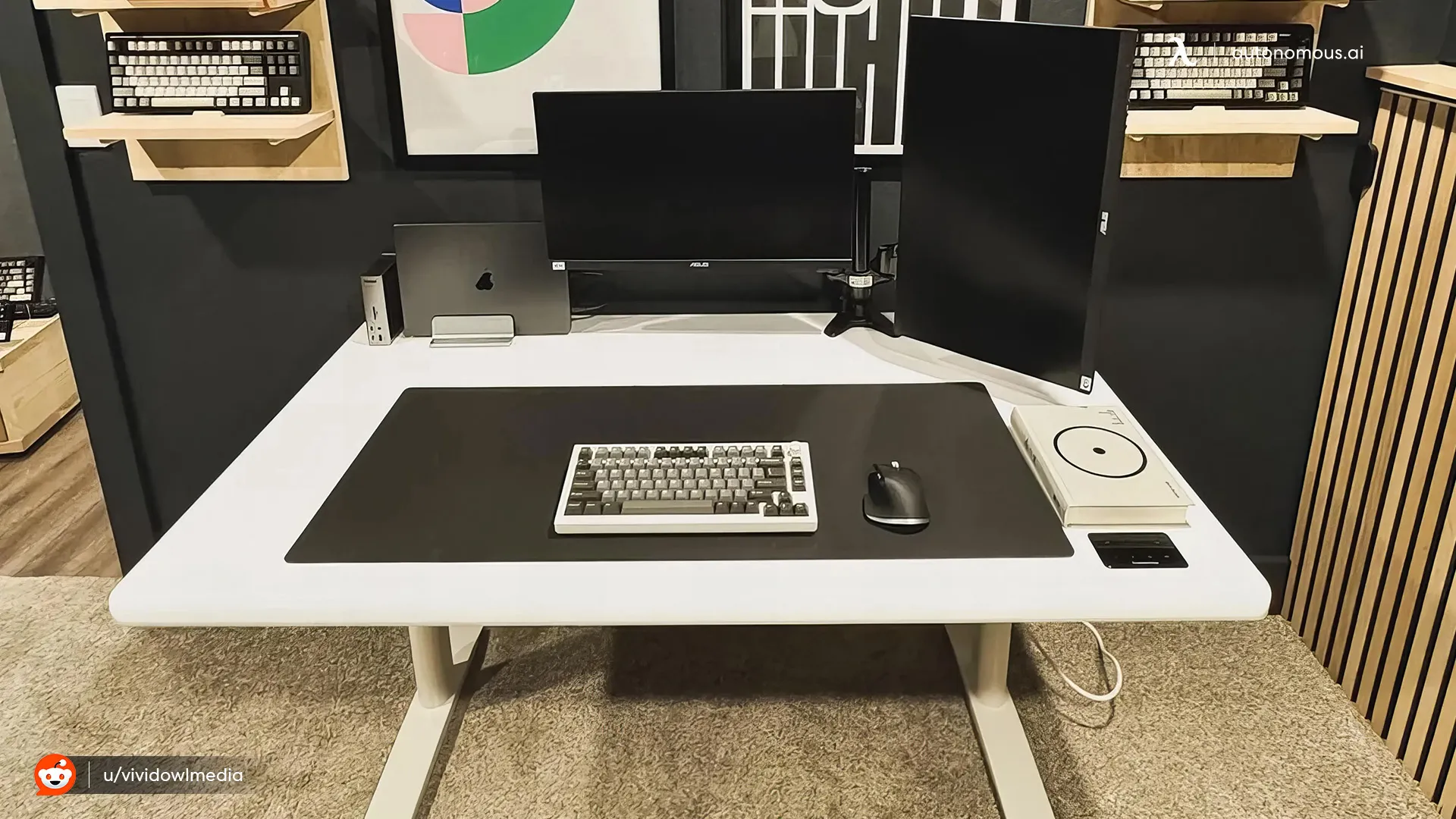
- The Natural Flow
Nature softens the hard edges of routine. A few desk plants, warm wood finishes, and natural light streaming across your custom home office furniture can change the way you experience time at work. It grounds your mind and creates a quiet sense of balance — a small but lasting investment in daily well-being.
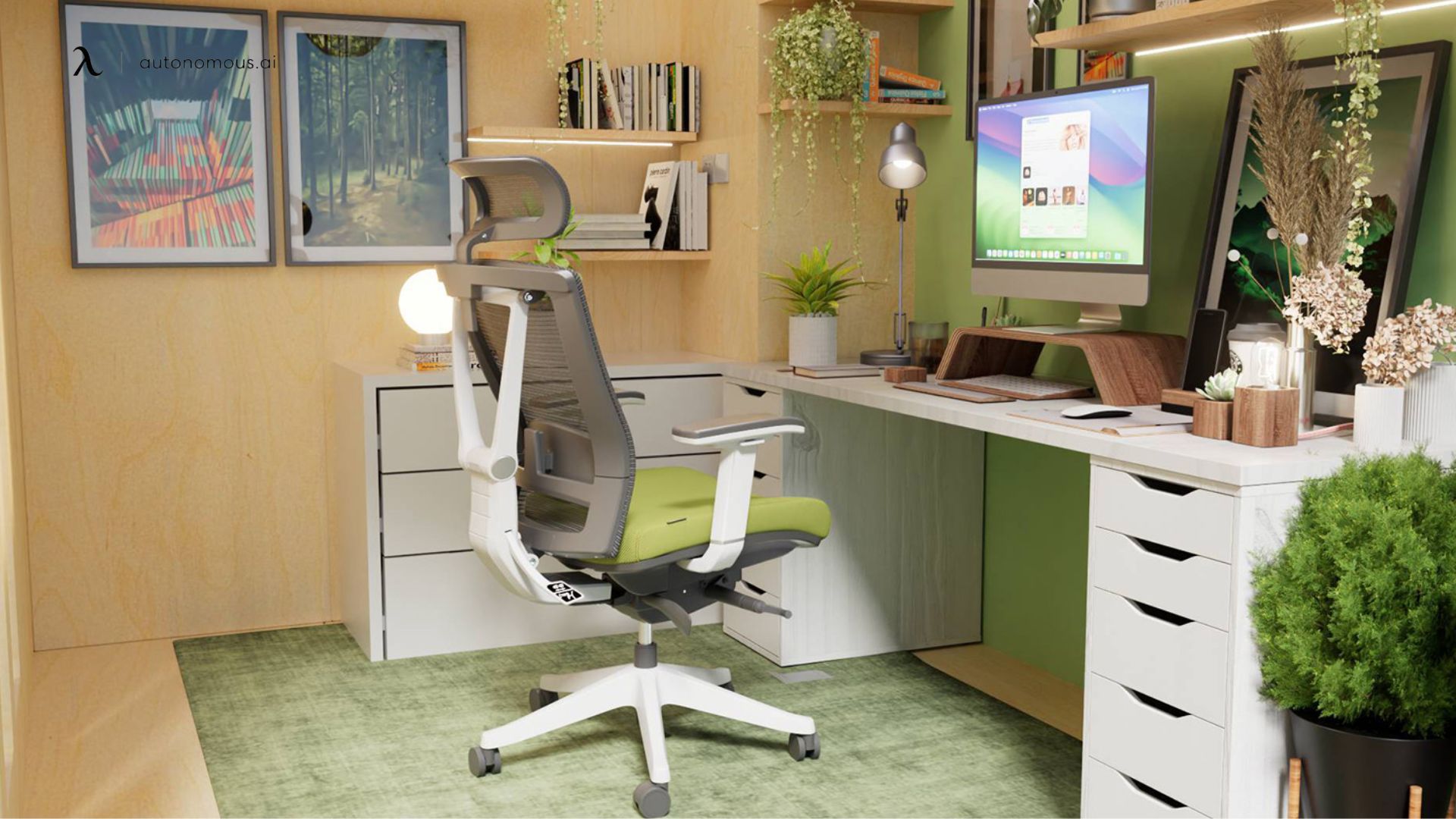
3. Personal Identity & Style
A truly personal workspace isn’t built from trends — it’s shaped by who you are. Your personality, work rhythm, and creative spark should echo in every detail. These ideas let your custom home office feel less like an office, and more like a personal signature.
- The Sharp Minimalist
Minimalism is less about empty space and more about clarity. Smooth surfaces, hidden storage, and crisp lines let your mind settle into deep work. Paired with soft neutral tones and clean geometry, this custom home office design gives structure without distraction.
It aligns closely with the principles of a minimalist desk setup, creating a workspace that feels calm, intentional, and focused. It’s a style that never fights your focus.
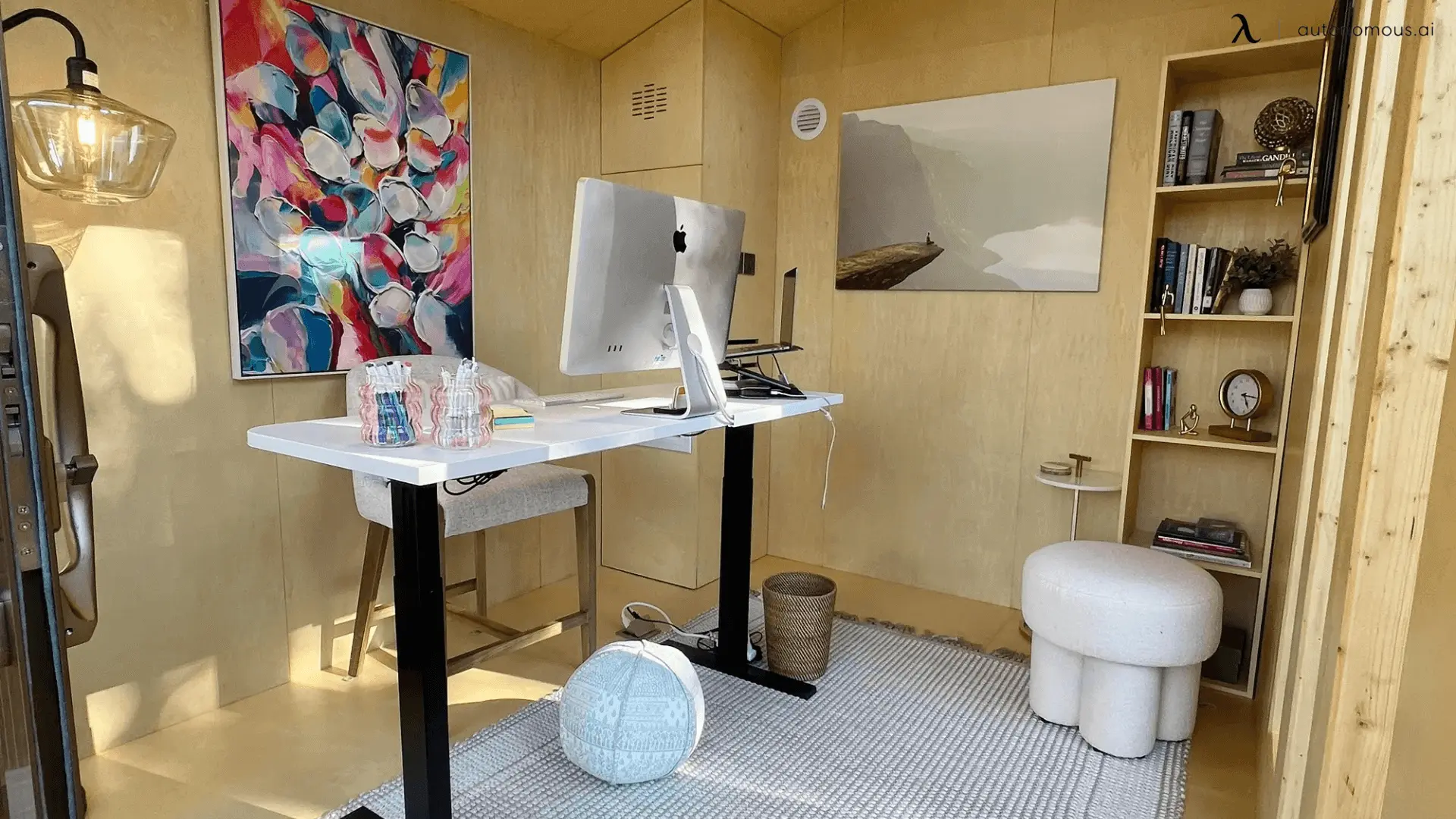
- The Cozy Den
Warmth can be just as powerful as minimalism. Plush rugs, ambient lighting, layered textures, and warm woods create a space that feels like a quiet retreat. A well-chosen custom home office desk, especially one that reflects the inviting tones of a walnut desk setup, anchors the room while the environment cushions the mind. It’s not just a workspace — it’s a daily refuge.
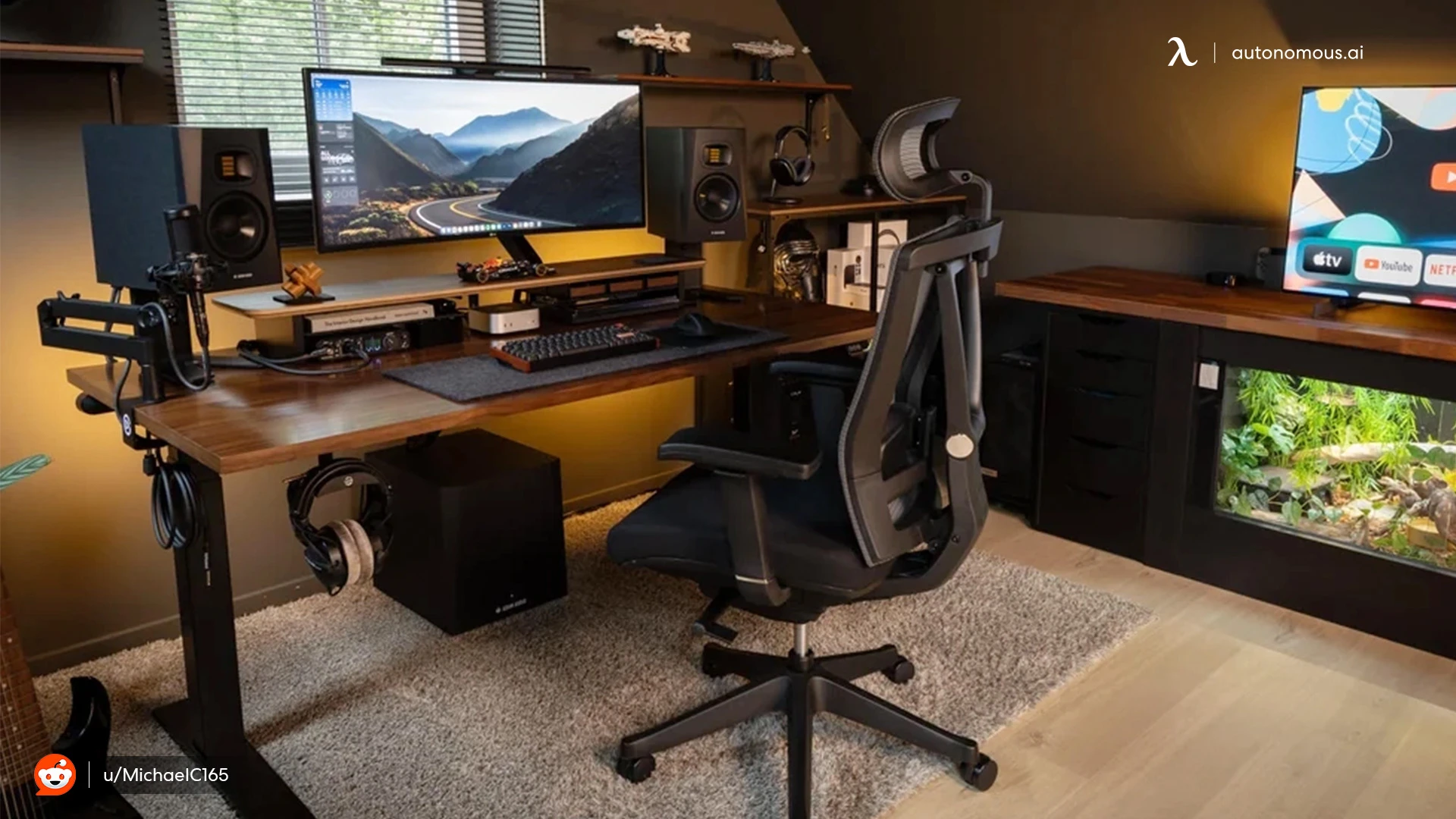
- The Signature Statement
Every space needs a heartbeat. A sculptural custom home office desk, a statement chair, or a bold bookshelf can define the entire look. This isn’t about clutter — it’s about one element that makes the space feel undeniably yours.
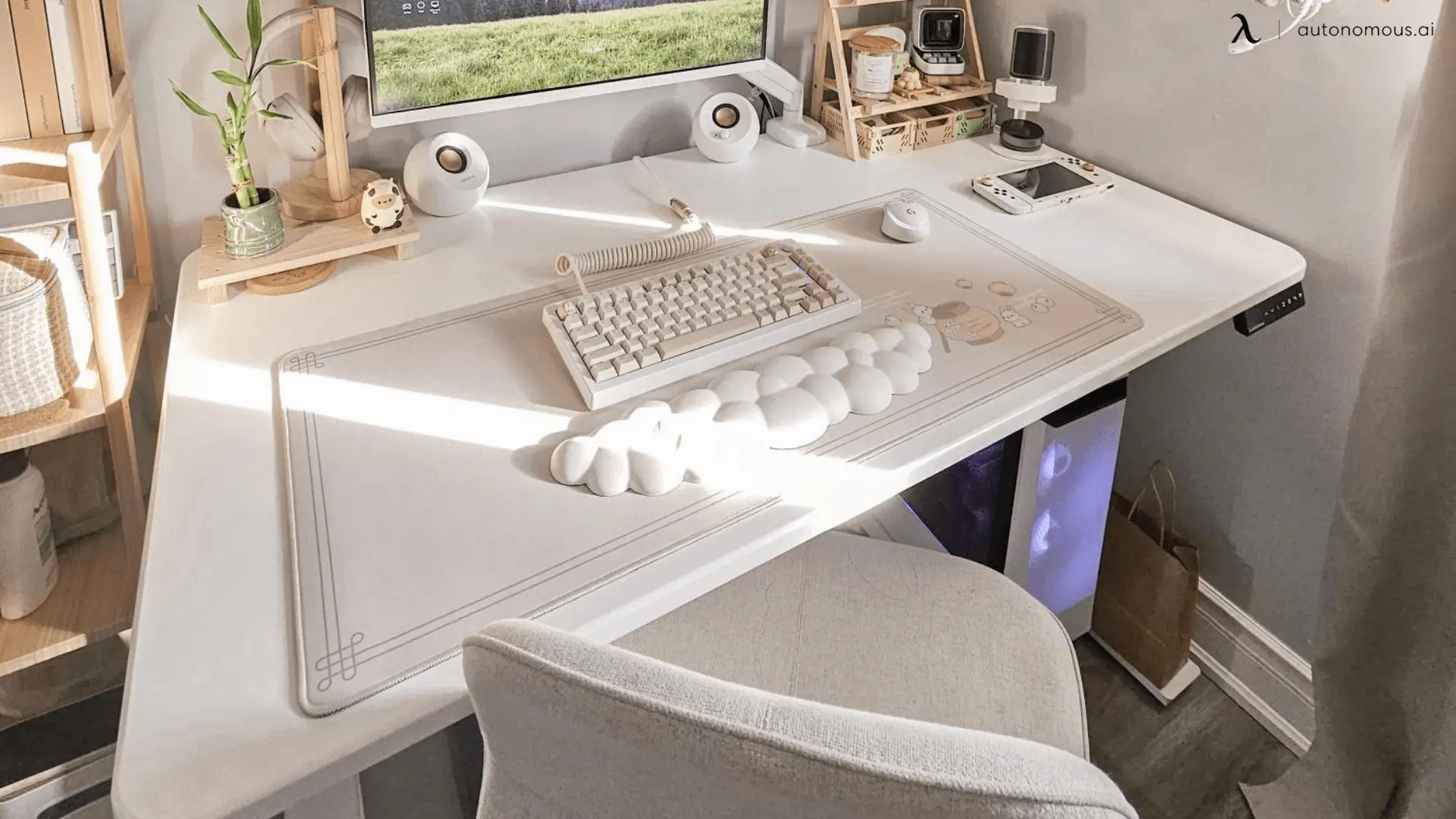
4. Performance & Technology
Finally, no modern workspace is complete without function meeting technology. For those who build, create, and lead their workday from home, a smart foundation can make everything flow smoother.
- The Command Center
For power users, the desk is more than a surface — it’s the control hub. A custom home office desk with built-in cable management, monitor arms, and charging ports keeps everything wired without looking chaotic. Pair it with ergonomic seating and flexible storage to make the space move with you.
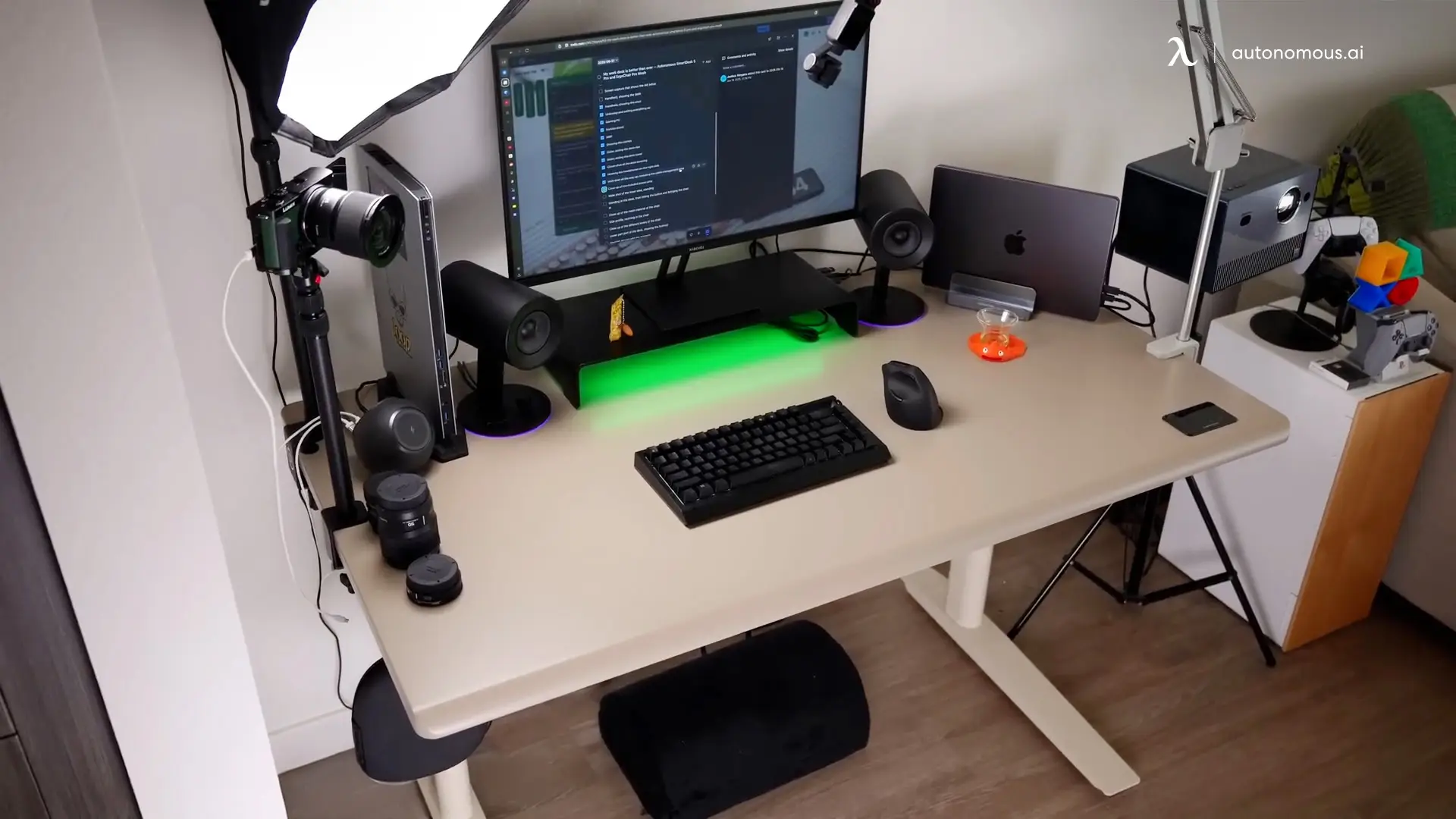
- Workflow Automation Corner
A workflow automation corner uses simple, accessible tech to streamline repetitive tasks so you can stay focused on deep work. Smart speakers or voice assistants can handle quick commands like calendar checks, reminders, or controlling your desk height. Automation routines, such as lights dimming when you start a meeting or your timer triggering stand reminders, help create smooth transitions between work modes.
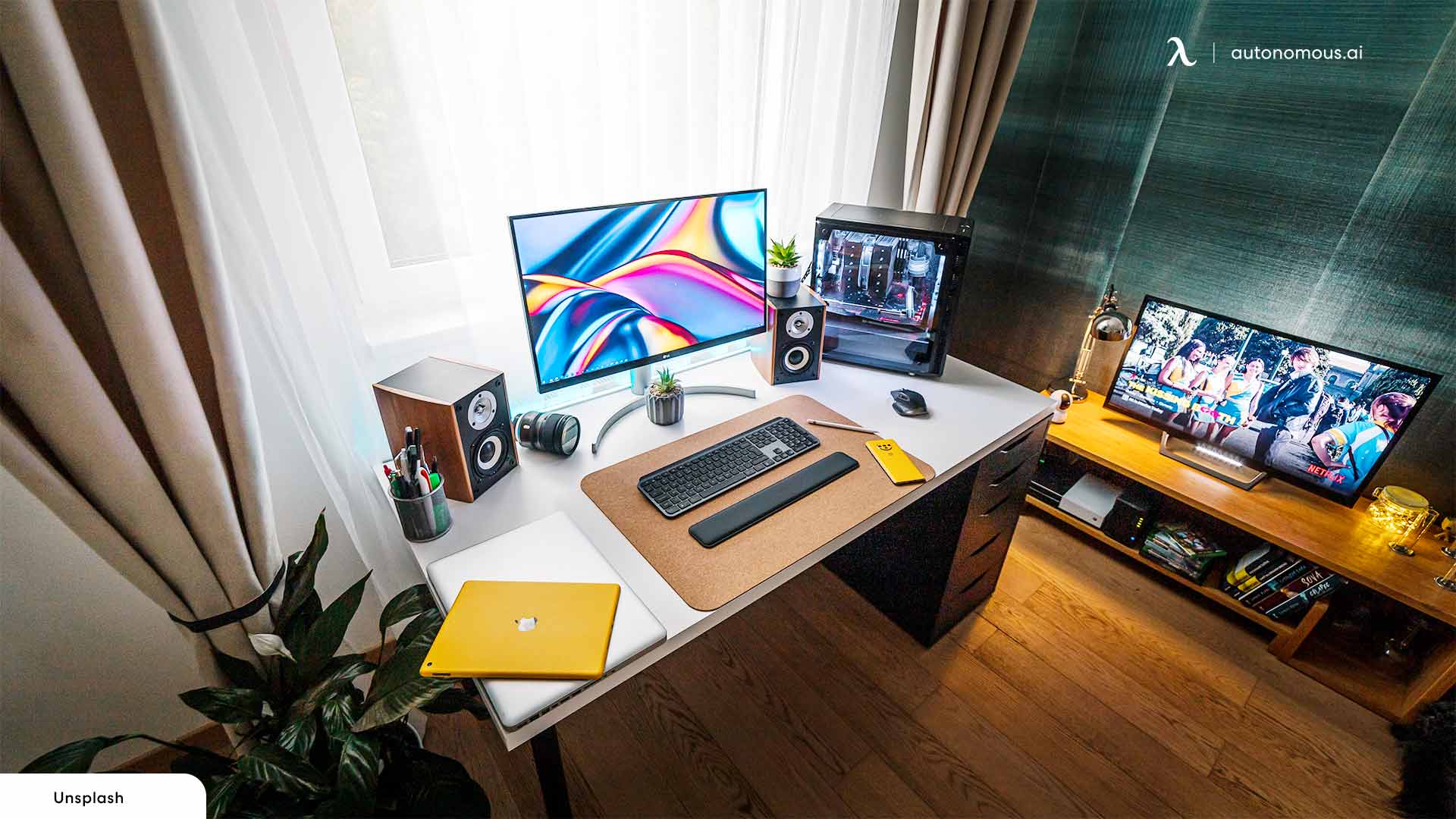
How Much Does A Custom Home Office Cost?
A custom home office typically costs between $500 and $5,000, depending on size, materials, and complexity. For some, it’s a simple desk and a few thoughtful upgrades. For others, it’s a full room transformation with built-in storage and tech integration. Understanding custom home office cost helps you plan realistically without cutting corners on comfort or quality.
Setup Type | Estimated Cost Range | Furniture & Features | Best For |
Basic | $500 – $1,500 | Simple custom home office desk, ergonomic chair, basic lighting, floating shelves | Small spaces or entry-level setups |
Mid-Range | $1,500 – $5,000 | Custom home office furniture, modular storage, task lighting, better acoustics, cable organization | Remote workers wanting more personalized layouts |
Premium | $5,000+ | Built-in desks and cabinets, tech integration, soundproofing, smart lighting, high-end finishes | Full room or backyard studio transformations |
Factors That Influence Cost:
- Space size: Smaller nooks cost less to build out, while larger dedicated rooms or pods increase labor and material costs.
- Furniture quality: A solid wood custom home office desk or custom storage will cost more than mass-market options, but also lasts longer.
- Design complexity: Built-in or tech-integrated layouts require more planning and installation.
- Lighting and acoustics: High-quality lighting and sound treatments can elevate the feel and usability of the space.
- Tech upgrades: Monitor arms, cable management systems, and smart controls can add both comfort and cost.
A custom home office can fit many budgets. The right combination of layout, furniture, and design features can make even a modest investment feel like a tailored workspace. The goal isn’t to spend more — it’s to create a setup that feels just right for your everyday work.
How To Build Your Custom Home Office (Step-by-Step)
Turning a vision into a real space takes more than picking furniture and hoping it fits. A well-built custom home office starts with clarity, smart decisions, and thoughtful layering. Instead of rushing to fill the room, approaching it step by step ensures your setup grows with you — not against you.
1. Assess Your Work Style
Before thinking about furniture or layouts, get clear on your daily routine. How many hours do you spend at your desk? Do you need silence, movement, or space for multiple monitors? Knowing how you work is the foundation for every custom home office design choice that follows.
2. Plan The Layout First
Good design isn’t about what’s pretty first — it’s about what flows. Before picking colors, wall art, or accessories, map out how your workspace will function. Decide where your workspace should face for the best lighting and view.
Consider power access, movement paths, and storage zones. A thoughtful layout prevents congestion, keeps your tools within easy reach, and allows for upgrades later without tearing everything apart.

3. Choose Core Furniture
Identify the essentials — typically a desk and a chair — but don’t get stuck on finishes or features yet. At this stage, the goal is to secure space, positioning, and proportions, not final furniture specs. Accessories and décor can come later once your foundation is set.
4. Build in Lighting and Sound Strategy
Map out where your main lighting will be and how you’ll manage noise before anything gets installed. This step makes your setup feel structured from the ground up, rather than patched together.
5. Integrate Tech Early
Plan power access, monitor placement, and cable routing before your desk arrives. A custom home office design that accommodates your tech upfront avoids clutter, awkward layouts, and messy rewiring later.
6. Personalize With Intention
Once the structure is locked in, you can bring personality into the room — textures, color, or a standout piece of custom home office furniture that reflects your style. A little restraint here makes the space timeless, not trendy.
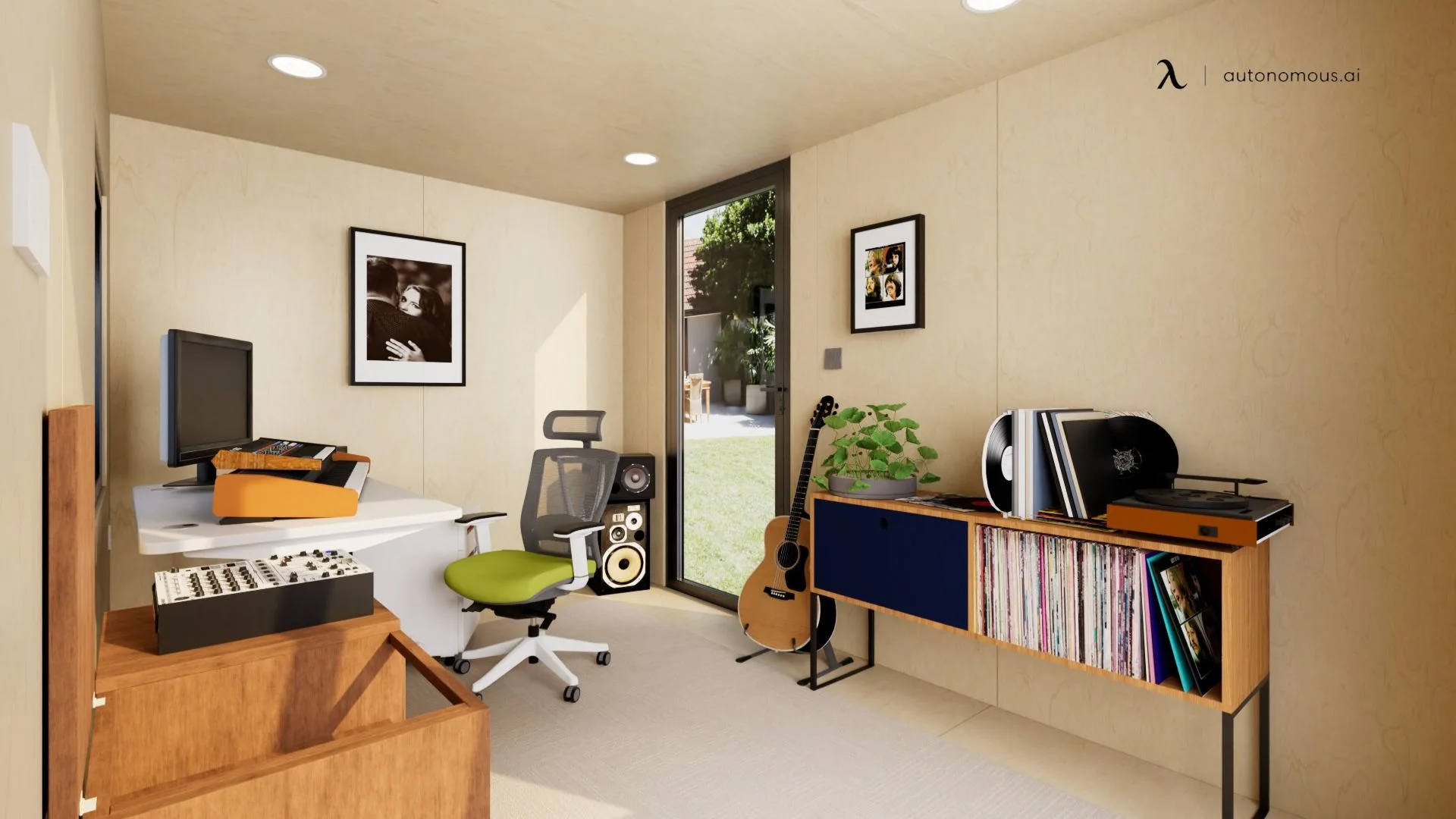
Best Furniture Choices For Remote Work Comfort
Once the structure of your custom home office is mapped out, the next step is choosing the pieces that make it real. A well-planned layout is only as good as the furniture that supports it, and selecting the right desk, chair, storage, and accessories can turn an empty space into a fully ergonomic workstation.
- Custom Home Office Desk
The desk is the anchor of your workspace. For remote workers, a standing desk is one of the smartest upgrades to make. It encourages active movement after long sitting periods, improves circulation, and helps maintain better posture throughout the day.
- Ergonomic Chair
Long hours demand real support. An ergonomic chair with adjustable height, lumbar support, and breathable chair materials helps maintain good posture and prevent back pain. Pairing it with your desk ensures proper alignment and lasting comfort.
- Storage That Works With You
Storage isn’t just about hiding clutter. A mix of open shelving, modular drawers, and mobile filing cabinets keeps essentials close without overwhelming the space. Well-placed custom home office furniture can also serve as functional dividers in shared rooms.
- Lighting Essentials
Good lighting boosts focus and energy. Task lamps for direct illumination and warm ambient lighting for a softer glow make a noticeable difference in daily comfort. Lighting that integrates with your custom home office design helps reduce eye strain and creates a balanced atmosphere.
- Accessory Add-Ons
Small details like monitor arms, office footrests, or under-desk trays make your workspace feel more intuitive. These additions keep your posture in check, free up surface space, and contribute to an overall clean look.
FAQs
1. How much does a custom home office design cost?
A custom home office design typically ranges from around $500 to over $5,000 for a built-in setup, depending on size, materials, and complexity. Some full conversions or additions may exceed $20,000 when including high-end finishes and installations.
2. What are the three types of offices?
The three common types of offices are private offices, open-plan offices, and flexible or hybrid offices. A custom home office can draw from any of these styles, depending on how much privacy, collaboration, or flexibility you want in your workspace.
3. Can you build a home office?
Yes, you can build a home office in almost any space, a spare room, a corner of a living area, or even a backyard pod. With a well-planned layout and the right custom home office furniture, you can create a setup that fits your work habits and environment.
4. What does a custom home office include?
A custom home office usually includes a tailored layout, built-in or modular storage, a desk surface optimized for your workflow, and integrated tech/cable management. It goes beyond off-the-shelf furniture by aligning each element with how you work and how your space functions.
5. Is building a custom home office worth the investment?
Building a custom home office can be worth the investment if you spend significant time working from home and need improved productivity, comfort, or space organization. Over time, quality furniture and a workflow-optimized setup often deliver better value than a generic workspace.
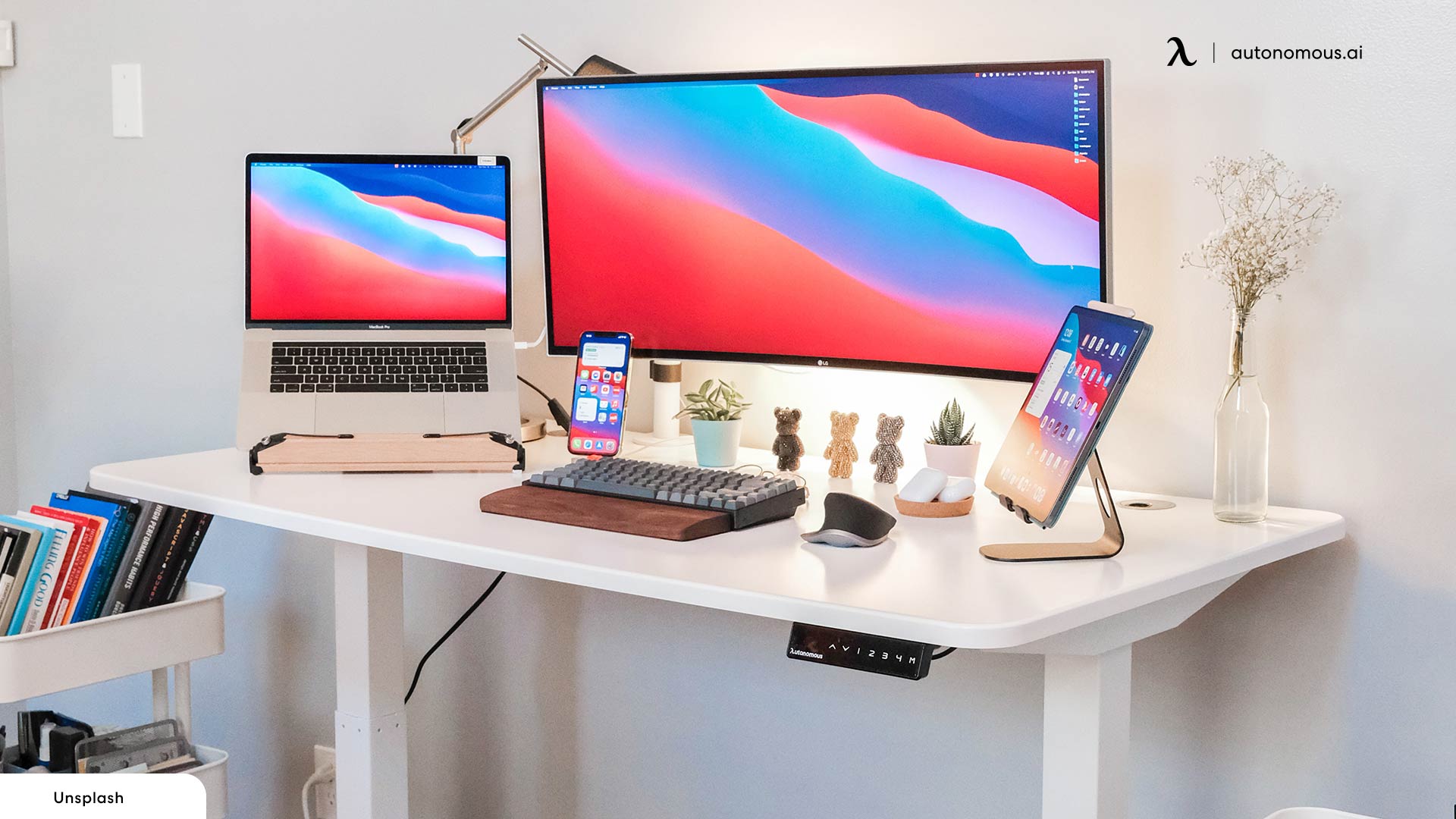
6. How long does it take to install a custom home office build-out?
Installing a custom home office build-out typically takes from a few days (for furniture only) to several weeks (for full built-in installations including electrical and cabinetry). Scheduling, material lead-times, and whether construction is required will affect the overall timeline.
7. How can I keep custom home office cost down without sacrificing quality?
To control cost while maintaining quality, start with a high-impact piece like a standing desk and ergonomic chair, reuse or refurbish existing furniture for secondary storage, and phase in additional upgrades (lighting, built-ins) over time. Choosing durable materials and focusing on essentials first helps budget stretch further.
8. Will a custom home office increase my home’s value?
Yes—adding a well-designed custom home office can enhance the appeal of your home to remote-working buyers by creating a dedicated, functional workspace. While it may not always yield dollar-for-dollar return, it often gives you an edge in a competitive market.
9. What size should a custom home office be for remote work?
For focused remote work, a space of approximately 8×8 to 10×10 feet typically suffices, as long as the layout supports your desk, storage, and movement. Larger dedicated rooms (12×12 feet or more) allow for dual monitors, built-ins, and extra equipment, but smart design matters more than sheer square footage.
10. What are the top mistakes to avoid when planning a custom home office?
Common mistakes include starting with décor before workflow, choosing a desk without ergonomic or spatial fit, overlooking cable and tech planning, and under-estimating lighting or acoustics. A successful custom home office focuses first on how you work, then builds design around that.
Conclusion
A custom home office isn’t just about creating a beautiful space — it’s about shaping an environment that supports the way you work every day. From thoughtful planning and smart budgeting to choosing the right furniture and integrating personal touches, every decision plays a role in making your workspace truly your own.
Whether you’re upgrading a small corner or transforming an entire room, the right custom home office design can boost focus, increase comfort, and make remote work more sustainable. It also reflects how modern workspaces continue to evolve, blending functionality with flexibility — much like the principles found in modern office design. Start with the basics, build intentionally, and let your space evolve with you — one smart choice at a time.
.svg)

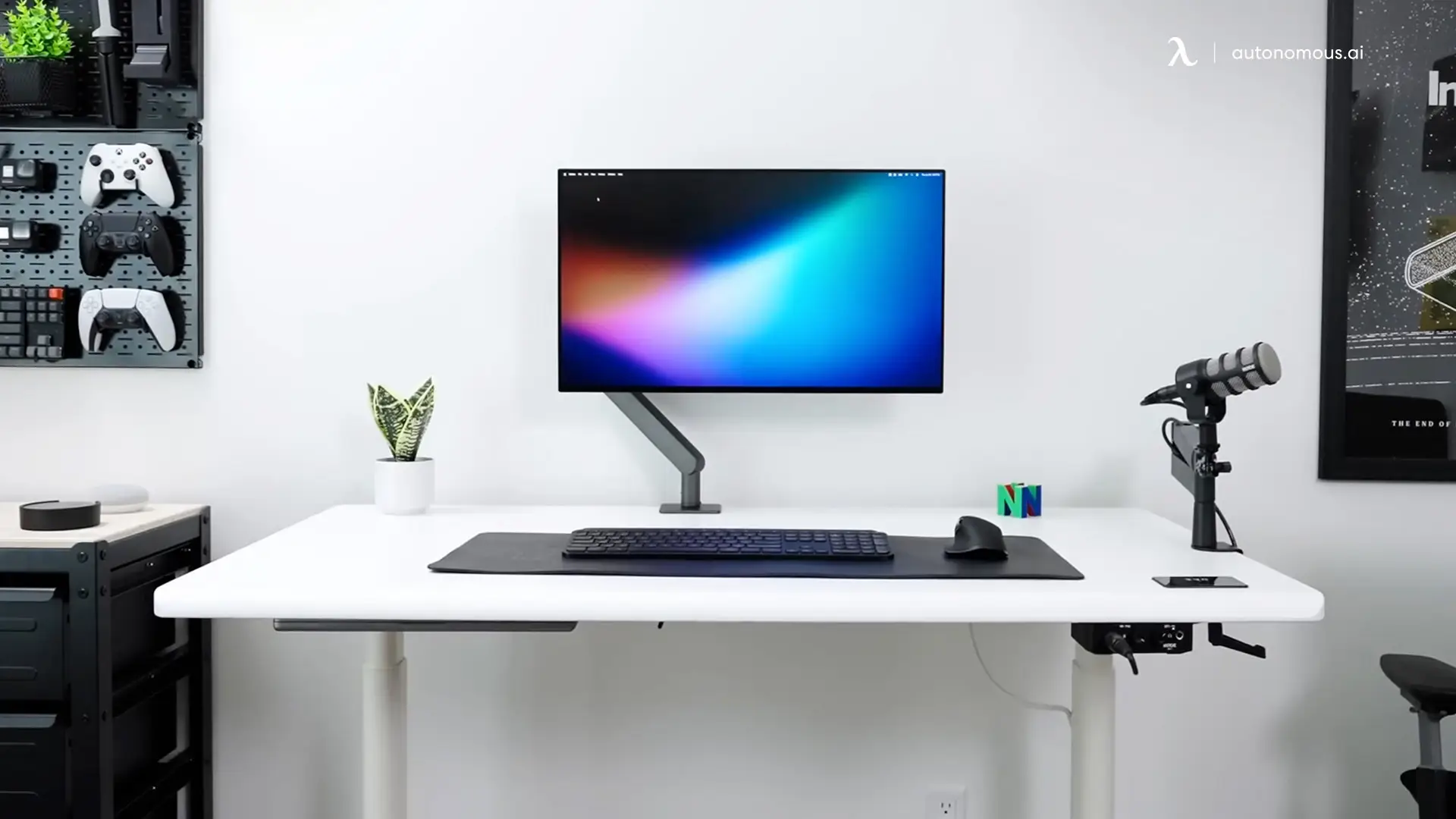

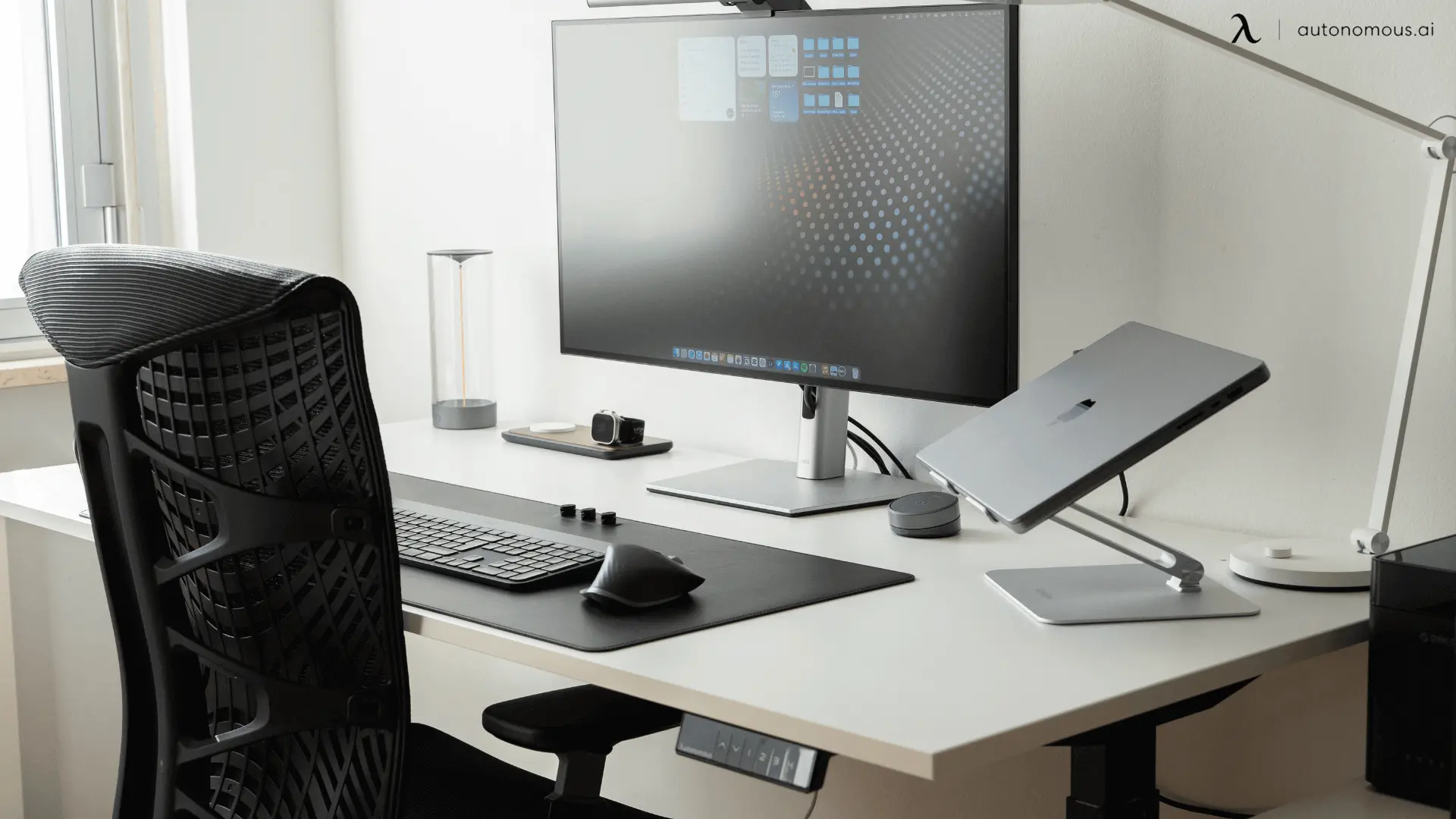
.webp)
